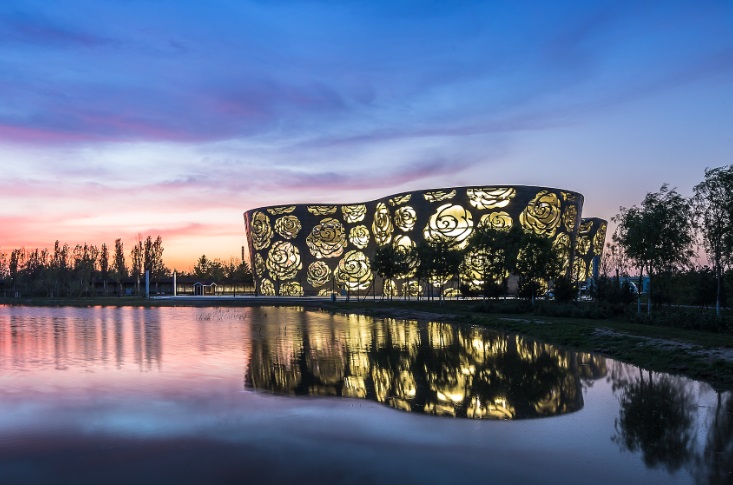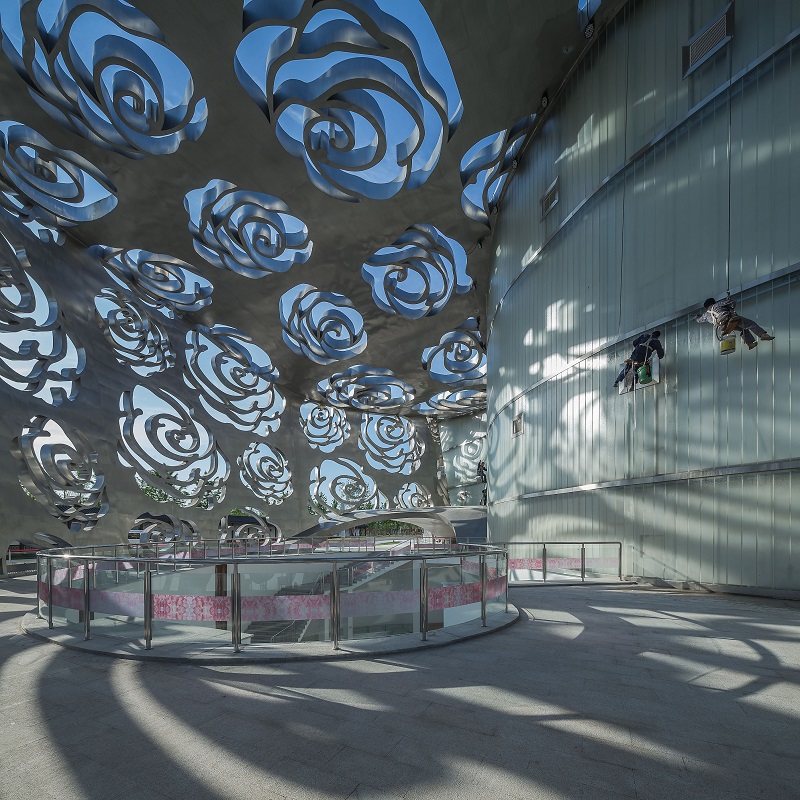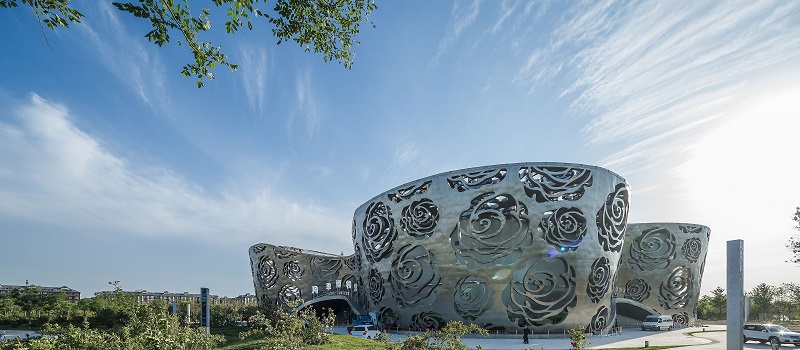Rose Museum
In May 2016, the Rose Museum, located in Beijing, China, opened to the public. Billed as a 'world first’, the museum is characterised by a 'solid' volume covered by a silk-like skin of stainless steel with a paper-cut pattern of Chinese roses.
Designed by NEXT architects, the museum "...aims to create a new architecture for China, in which history and modernity, art and architecture blend." The architects were inspired by the roses and floriculture which are deeply rooted in Chinese culture, as well as by traditional Chinese architecture, in particular, walled courtyards.
The stainless steel façade is 300 m long and 17 m high, perforated with a rose-shaped pattern. There are four half-open courtyards between the façade and the main building, in which the rose pattern creates an interplay between light and shadow. At night, the façade is illuminated and projects rose shadows outside the building.
The Rose Museum was completed in time to host the 2016 World Rose Convention.
Images copyright Xiao Kaixiong.
[edit] Related articles on Designing Buildings Wiki
- Building of the week series.
- China Philharmonic Hall.
- Dali Theatre and Museum.
- Dancing House, Prague.
- Dunmore Pineapple.
- Kunsthaus Graz.
- Lotus Temple.
- National Centre for the Performing Arts, Beijing.
- Office Center 1000 Kaunas.
- Phoenix International Media Center, Beijing.
- Sage Gateshead.
- Titanic Belfast.
- Unusual building design of the week.
- Xili Sports and Cultural Centre.
Featured articles and news
Latest Build UK Building Safety Regime explainer published
Key elements in one short, now updated document.
UKGBC launch the UK Climate Resilience Roadmap
First guidance of its kind on direct climate impacts for the built environment and how it can adapt.
CLC Health, Safety and Wellbeing Strategy 2025
Launched by the Minister for Industry to look at fatalities on site, improving mental health and other issues.
One of the most impressive Victorian architects. Book review.
Common Assessment Standard now with building safety
New CAS update now includes mandatory building safety questions.
RTPI leader to become new CIOB Chief Executive Officer
Dr Victoria Hills MRTPI, FICE to take over after Caroline Gumble’s departure.
Social and affordable housing, a long term plan for delivery
The “Delivering a Decade of Renewal for Social and Affordable Housing” strategy sets out future path.
A change to adoptive architecture
Effects of global weather warming on architectural detailing, material choice and human interaction.
The proposed publicly owned and backed subsidiary of Homes England, to facilitate new homes.
How big is the problem and what can we do to mitigate the effects?
Overheating guidance and tools for building designers
A number of cool guides to help with the heat.
The UK's Modern Industrial Strategy: A 10 year plan
Previous consultation criticism, current key elements and general support with some persisting reservations.
Building Safety Regulator reforms
New roles, new staff and a new fast track service pave the way for a single construction regulator.
Architectural Technologist CPDs and Communications
CIAT CPD… and how you can do it!
Cooling centres and cool spaces
Managing extreme heat in cities by directing the public to places for heat stress relief and water sources.
Winter gardens: A brief history and warm variations
Extending the season with glass in different forms and terms.
Restoring Great Yarmouth's Winter Gardens
Transforming one of the least sustainable constructions imaginable.

























